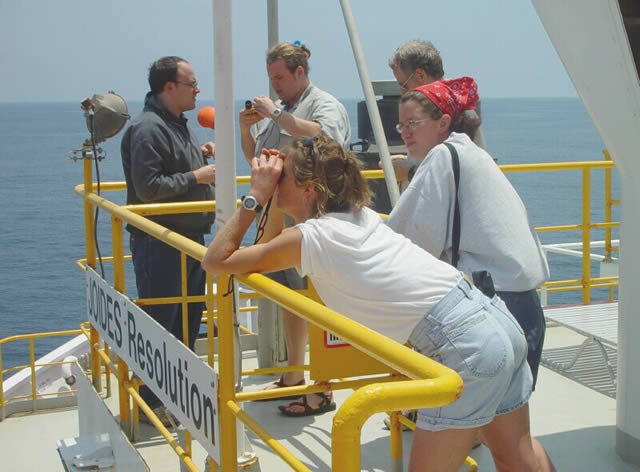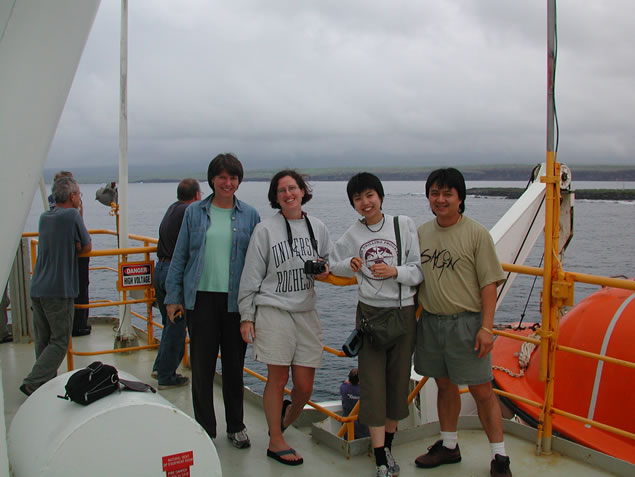
Microbiologists Andreas Teske (Woods Hole Oceanographic Institution, USA), Axel Schippers (Bundesanstalt für Geowissenschaften und Rohstoffe, Germany), and Fumio Inagaki (Japan Marine Science and Technology Center) study a 12-million-year old basalt recovered from the sediment-basement contact at Site 1225 in the equatorial Pacific.

Land ho—after 18 days the Galapagos Islands came into sight. From left to right: John Davis (Marine Computer Specialist), Kim Bracchi (Marine Laboratory Specialist: Core lab), Scott Herman (Marine Laboratory Specialist: Paleomagnetism), Kathryn Ford (Physical Properties Specialist, University of Rhode Island, USA), and Juergen Wiegel (Microbiologist, University of Georgia, USA)

A regularly scheduled smile contest on the deck of the JOIDES Resolution in Puerto Isidro Ayora, Galapagos. From left to right: Dennis Graham (Marine Lab Specialist: Chemistry) and Derryl Schroeder (Operations Engineer) not participating. Barbara Bekins (Physical Properties Specialist, USGS–Menlo Park, USA), Kathryn Ford (Physical Properties Specialist, University of Rhode Island, USA), Sachiko Niitsuma (Sedimentologist, Shinshu University, Japan), and Steve Tran (Marine Computer Specialist).

Leg 201 ODP technical staff on the JOIDES Resolution helideck in Puerto Isidro Ayora, Galapagos. Back row, left to right: Steve Tran, Bob Olivas, Jan Neilson, John Davis, Mike Meiring, Stan Hammon, Scott Herman, Randy Gjesvold. Middle row, left to right: Michiko Hitchcox, Roy Davis, Dennis Graham. Front row, left to right: Chieh Peng, Paula Weiss, Kim Bracchi, Stan Preston. Not pictured: Cyndi Prince (because she's taking the picture) and Gus Gustafson (because he's shy).

Pelicans visiting the JOIDES Resolution close to the Galapagos Islands.